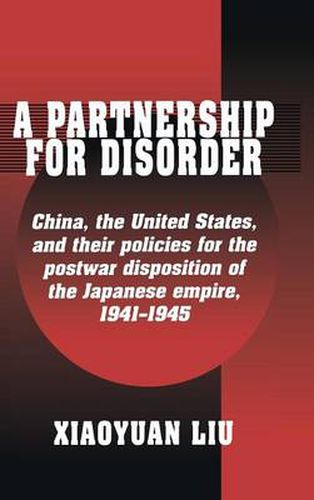Readings Newsletter
Become a Readings Member to make your shopping experience even easier.
Sign in or sign up for free!
You’re not far away from qualifying for FREE standard shipping within Australia
You’ve qualified for FREE standard shipping within Australia
The cart is loading…






A Partnership for Disorder examines American-Chinese foreign policy planning in World War II for decolonising the Japanese Empire and controlling Japan after the war. This study unravels some of the complex origins of the postwar upheavals in Asia by demonstrating how the US and China’s disagreements on many concrete issues prevented their governments from forging an effective partnership. The two powers’ quest for long-term cooperation was further complicated by Moscow’s eleventh-hour involvement in the Pacific War. By the war’s end, a triangular relationship among Washington, Moscow, and Chongqing surfaced from secret negotiations at Yalta and Moscow. Yet the Yalta-Moscow system in Asia proved too ambiguous and fragile to be useful even for the purpose of defining a new balance of power among the Allies. The failure of the system was compounded by its obliviousness to Asia’s dynamic nationalist forces.
$9.00 standard shipping within Australia
FREE standard shipping within Australia for orders over $100.00
Express & International shipping calculated at checkout
A Partnership for Disorder examines American-Chinese foreign policy planning in World War II for decolonising the Japanese Empire and controlling Japan after the war. This study unravels some of the complex origins of the postwar upheavals in Asia by demonstrating how the US and China’s disagreements on many concrete issues prevented their governments from forging an effective partnership. The two powers’ quest for long-term cooperation was further complicated by Moscow’s eleventh-hour involvement in the Pacific War. By the war’s end, a triangular relationship among Washington, Moscow, and Chongqing surfaced from secret negotiations at Yalta and Moscow. Yet the Yalta-Moscow system in Asia proved too ambiguous and fragile to be useful even for the purpose of defining a new balance of power among the Allies. The failure of the system was compounded by its obliviousness to Asia’s dynamic nationalist forces.